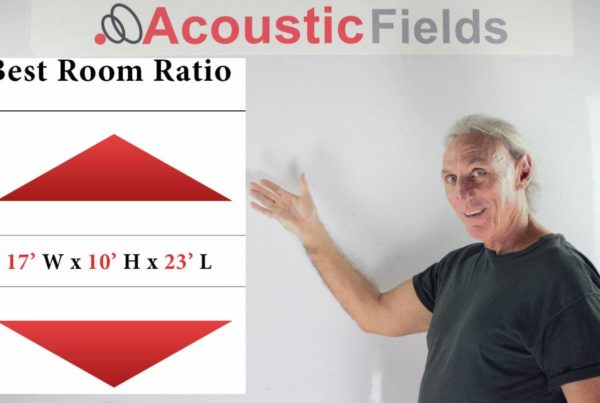There seems to be a trend in the culture in North America where more is better. Bigger speakers, more speakers, larger diameters, subwoofers and I’m going to argue that in room acoustics, this is the wrong way to go. I really think less is better because let’s keep our goal in mind with room acoustics.
What is our goal?
Our goal is to hear more music, not more energy and I think this is confusing to people. More energy is not necessarily more music. Less energy is probably a better way to produce more music. Today’s rooms are so small that you just have to be careful about how you pressurize them, how much energy you put in them especially what type of energy and what frequencies that energy is at.
You just have to be very careful. There is a matching between speaker and room size and I don’t subscribe to the philosophy that more is better because less is better. Smaller drivers are more articulate by definition. A smaller driver can move faster. If it can move faster it can duplicate the sound quality quicker and more efficiently. This video expands on this discussion a little further.
A bigger driver is going to move slower in terms of surface area so you’ve got to put more power in it to get it to move like a middle size or smaller driver. So air on the side of smaller. It’ll save you money, it won’t exasperate the problems that you already have in your room and you’ll hear more sound and you’ll hear more music and more is better when it comes to enjoying music.
Larger speakers do not necessarily produce more music.
Now they may in a properly treated room that is the right size and volume but I just don’t see that today. I just don’t see rooms that have the correct size and volume. Everybody is working in smaller spaces and I understand that as things are expensive, real estate is expensive, so I get that. That’s the reason for our diaphragmatic absorption because you need a lot of horsepower in small rooms because we have big problems to deal with. But always kind of look towards how do I get the sound quality that I desire and to get that your smaller diameter speakers in your smaller packages to me produce much more of that quality that you’re looking for.








Dennis,
I watched a YouTube regarding speaker size and room size by Acoustic Insider (Jesco). It seems to partially contradict your version of the same subject. See what you think. Thanks.
Tom Cochran
Please be specific. I have no idea what you are asking.